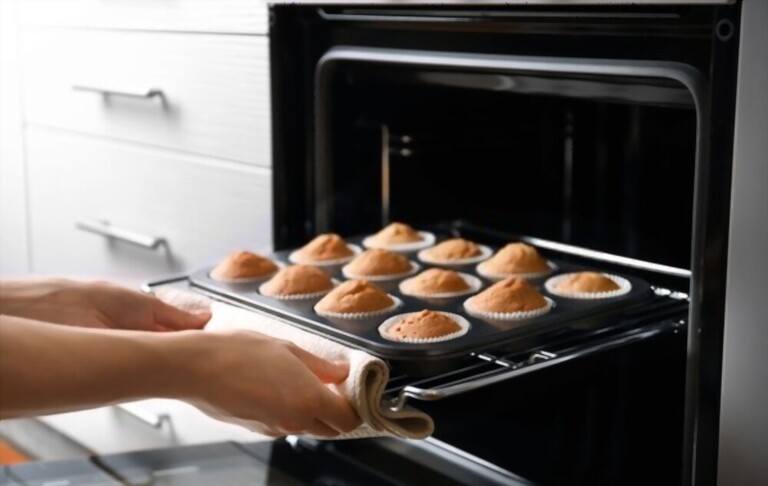Ovens are equipment that are used to bake your favorite dishes and provide the ideal supper for your family and friends. However, choosing the ideal oven during a kitchen makeover or while building a home might be tricky. When selecting an oven, numerous factors must be considered, including price, size, kind, color, and look. Choosing the appropriate oven may have a significant impact on the long-term success of your kitchen and home makeover. Consider the following steps how to choose baking oven:
How to Choose Baking Oven
Size
Size is one of the important factors on how to choose a baking oven. Choosing the proper oven for your kitchen will heavily influence the size of your oven. Most ovens range in width from 25 to 32 inches, so choose the size that best fits your kitchen design. Consider both the interior and exterior measures of the oven compartment to ensure that it will accommodate your most often used pans and baking sheets.

Wall Oven or Range
You must select whether to install a built-in oven or a range unit that includes an oven and a cooktop. Built-in ovens often offer less cubicle area than mid-range ovens, so keep this in mind when selecting a size. In-wall ovens are typically more handy for putting food in and out because you don't have to bend over as much, depending on their placement. Furthermore, having a separate hob frees up room beneath the cabinets. If you have limited kitchen space, you may prefer a range unit. You should also think about "landing yards" on either side of a prospective range position or near a wall oven for hot goods.

Color
One of the steps in how to choose a baking oven you can’t ignore is color. Stainless steel ovens have been popular for some years, and black ovens were popular before that. White or ivory ovens are popular, especially in kitchens with light-colored cabinetry, while avocado green and harvest gold were popular oven and appliance colors decades ago. Metallic treatments, such as gold and copper, are becoming increasingly fashionable. When choosing a color for your oven, it's normally ideal to match the color of your other kitchen appliances, such as the refrigerator, stove, and dishwasher. Consider the finishes of your kitchen cabinets, as well as the colors of your countertop, backsplash, and floor. Consider harmonizing the colors in neighboring rooms if you have an open kitchen layout.
Cleaning
Although few people love cleaning the oven, opting off of the self-cleaning option might save you money. However, because self-cleaning ovens often have higher insulation, they retain heat better, which can reduce energy expenses and perhaps offset the additional expenditures.

Electric or gas?
Consider the current electrical connection and whether building a gas line is a possibility while upgrading or remodeling. Wall ovens are typically electric, however ranges are available in both electric and gas configurations. Electric ovens are often less expensive to acquire and run than gas ovens.
Type
Ovens are classified into six varieties based on their cooking methods: conventional, convection, microwave, steam, combination, and wood-fired ovens. Convection ovens include fans that circulate heat for faster, more uniform cooking, whereas conventional ovens normally have two heating components. Microwaves use radiation to cook food, whereas ovens use steam from the water tank. Combination ovens combine convection characteristics with microwave, conventional, or steam heating in a single appliance for convenience. Wood ovens, particularly for pizza making, are becoming increasingly popular in high-end kitchens.

Location
If you pick a built-in or double oven, you must decide where the oven will be placed in the kitchen. You'll need a convenient spot near the oven to place hot food, so having plenty of counter space nearby is critical. Consider the distance between other kitchen equipment and the oven to reduce the number of steps you must take while cooking. Kitchen island ovens are becoming increasingly popular, and another contemporary design idea is to stack twin ovens horizontally rather than vertically.
How to Clean the Baking Oven
Cleaning the oven is one of the most underappreciated tasks. It's simple to dismiss - just shut the door - but it has disastrous consequences. Months may pass before you completely realize the seriousness of the situation, and then you'll be confronted with obstinate layers of oil and filth.
You'd want to get one of those all-in-one oven cleaners that you leave overnight, but the chemical fume warnings may be inadequate. There is a more natural method to complete tasks.
There are three indicators that it is time to clean your oven. Is there any crust or residue on the bottom? Is the door oily or dirt-splattered? Second, scent. Is there a weird odor when you burn the oven? An odor before cooking indicates that there is grease, grime, or food remaining within. Finally, smoking. Because a clean oven does not burn, this might potentially indicate a build-up.
The rule of thumb for culinary aficionados and bakers who use it frequently is to clean it every three months. If you only use your oven a few times a month, cleaning it once or twice a year should be enough. Of course, keep an eye out for the above-mentioned indicators, and if something does occur, don't put off cleaning since it hasn't been long since your last visit.
A high-quality cleaner: You have a few choices here.
Option 1: Oven cleanser from the store: This is the simplest and quickest method for removing large volumes of oil and dirt. Please keep in mind that oven cleansers may be extremely caustic, so if you are sensitive to harsh chemicals or want an all-natural approach, you can select option 2 or 3.
Option 2: Baking soda, water, vinegar, and a spray bottle are all required. If you have a lot of dirt, this DIY solution is ideal. Make a paste with baking soda and water that will need to rest for 10-12 hours (or overnight), so allow plenty of time.
Option 3: Water with lemon. Another do-it-yourself method that takes around 1-2 hours and is suitable if your oven is just mildly filthy and your rack does not require cleaning.
- Please do not use disposable gloves when cleaning with rubber gloves. This is especially critical if you pick option 1, because you'll want a long-lasting barrier between your skin and the cleanser, according to Johnson.
- To protect your eyes from cleansers, use protective safety glasses. These are not required for options 2 or 3.
- Paper towels or old newspapers: To line the floor around the oven in case anything spills during cleaning.
- Moist rag(s): To remove dirt after applying detergent. If your oven is especially filthy, you may require more than one.
- Cleaning pumice or microfiber sponge (optional): Useful if you have a lot of build-up to remove.
- Large plastic trash bag: This is required to clean your oven rack using Option 1.
Conclusion
Whatever type of oven you pick for your kitchen, remember to carefully read the manufacturer's instructions on how to choose a baking oven and always use it as directed. Clean up any spills or food residue as soon as possible, and use an oven thermometer to ensure the oven is heating evenly. Inspect the oven gasket on a regular basis for signs of wear and tear to assist ensure that heat stays inside the oven where it belongs. Your kitchen oven will last for years if you take care of it and use it properly.













